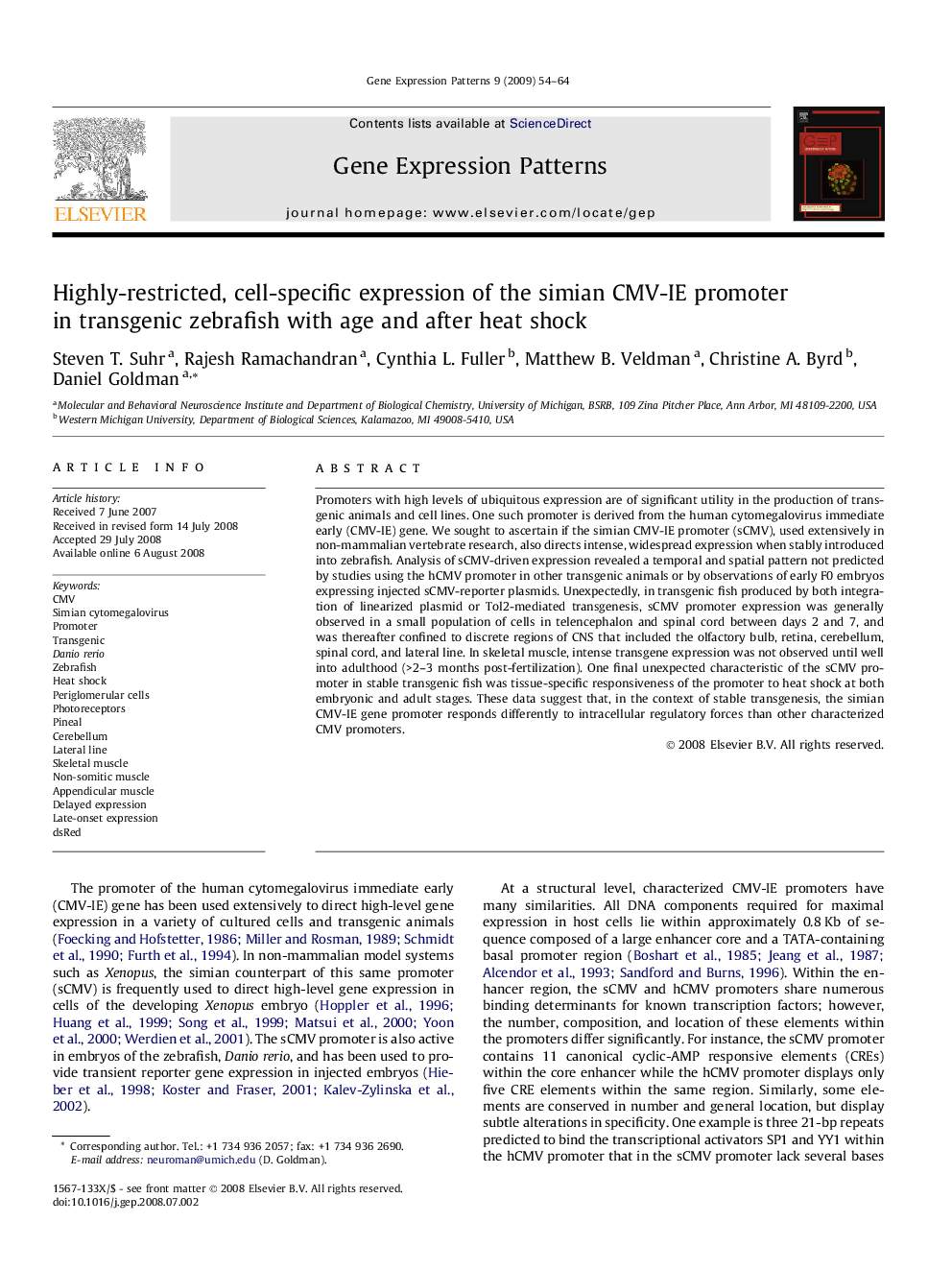| Article ID | Journal | Published Year | Pages | File Type |
|---|---|---|---|---|
| 2182196 | Gene Expression Patterns | 2009 | 11 Pages |
Promoters with high levels of ubiquitous expression are of significant utility in the production of transgenic animals and cell lines. One such promoter is derived from the human cytomegalovirus immediate early (CMV-IE) gene. We sought to ascertain if the simian CMV-IE promoter (sCMV), used extensively in non-mammalian vertebrate research, also directs intense, widespread expression when stably introduced into zebrafish. Analysis of sCMV-driven expression revealed a temporal and spatial pattern not predicted by studies using the hCMV promoter in other transgenic animals or by observations of early F0 embryos expressing injected sCMV-reporter plasmids. Unexpectedly, in transgenic fish produced by both integration of linearized plasmid or Tol2-mediated transgenesis, sCMV promoter expression was generally observed in a small population of cells in telencephalon and spinal cord between days 2 and 7, and was thereafter confined to discrete regions of CNS that included the olfactory bulb, retina, cerebellum, spinal cord, and lateral line. In skeletal muscle, intense transgene expression was not observed until well into adulthood (>2–3 months post-fertilization). One final unexpected characteristic of the sCMV promoter in stable transgenic fish was tissue-specific responsiveness of the promoter to heat shock at both embryonic and adult stages. These data suggest that, in the context of stable transgenesis, the simian CMV-IE gene promoter responds differently to intracellular regulatory forces than other characterized CMV promoters.
